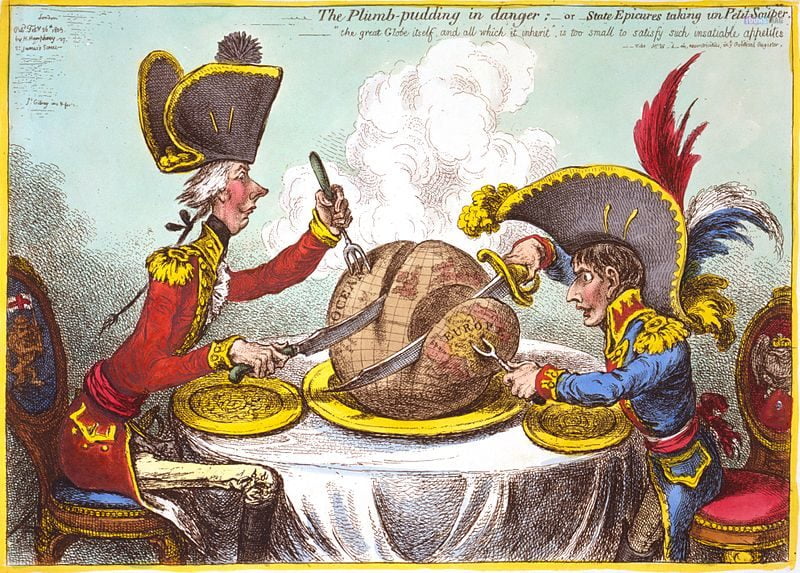The Use of Satire in Editorial Cartoons to Challenge Power Structures: In a world where authoritarianism is on the rise, where misinformation floods social media, and where political corruption often goes unchecked, few tools are as immediate, accessible, and piercing as the editorial cartoon. At the heart of this visual form of resistance lies satire — a potent blend of humor, irony, and exaggeration — that has the unique ability to challenge, ridicule, and expose power structures without the need for long essays or fiery speeches.
Editorial cartoons are not merely jokes on paper. They are acts of defiance. They are punches thrown with pencils, and their target is often the most powerful — presidents, dictators, corporate moguls, and even the societal norms that prop them up. In this article, we explore how satire in editorial cartoons functions as a tool for challenging power, the historical roots of this tradition, the techniques artists use to subvert authority, and why this form of commentary remains as vital as ever.

What Is Satire in Editorial Cartooning?
Satire is the art of using humor, irony, exaggeration, or ridicule to expose and criticize people’s stupidity, vices, or abuses of power — particularly in the context of politics and society. In editorial cartooning, satire often manifests as:
- Exaggerated depictions of politicians
- Metaphorical representations of societal issues
- Dark humor that unveils hypocrisy
- Juxtapositions that mock contradictions
Unlike straightforward political commentary, satire doesn’t just inform — it stings, embarrasses, and provokes. It tells truth to power in a way that’s instantly understood, emotionally charged, and, often, uncomfortably funny.

A Historical Overview: Satirical Cartooning as a Tradition of Resistance
Satire has always been part of the visual arts, but editorial cartooning took it to new heights during times of political upheaval.
✒️ James Gillray and the British Monarchy
In the late 18th century, British cartoonist James Gillray lampooned King George III and Napoleon Bonaparte with grotesque exaggeration, portraying monarchs as buffoons and warmongers. His prints, displayed in shop windows, became public talking points — a form of visual news and rebellion.
✒️ Honoré Daumier and French Despotism
In 19th-century France, Honoré Daumier used biting satire to criticize King Louis-Philippe, depicting him as a pear-shaped tyrant. For his work, Daumier was jailed — an early example of the risks faced by cartoonists challenging power.
✒️ Thomas Nast and American Corruption
In the U.S., Thomas Nast used satire in Harper’s Weekly to attack political boss William Tweed, exposing corruption through cartoons that reached even the illiterate. Tweed allegedly said, “I don’t care what they write about me… but those damned pictures — everybody sees them!”
This tradition of fearless satire continued through the 20th century — through Herblock’s attacks on McCarthyism, Zapiro’s critiques of apartheid, and Zunar’s defiance of Malaysian censorship. Each cartoonist, in their own way, used satire to disturb the comfortable and comfort the disturbed.

Why Satire Works: The Psychology of Mockery
Satire holds a mirror to power, but it’s not a neutral mirror — it’s a funhouse mirror that distorts, exaggerates, and reflects the absurd. This distortion is not deception. It is revelation.
1. Laughter as a Weapon
Laughing at the powerful diminishes their aura of invincibility. Satire makes emperors look naked, tyrants look silly, and dogmas look illogical. It invites audiences to participate in resistance through ridicule.
2. Humor as a Trojan Horse
Satire can slip past censorship or public defenses by appearing humorous. People may laugh before realizing they’ve been challenged. A cartoon mocking climate change denial or xenophobia disarms with comedy before provoking deeper reflection.
3. Exaggeration Clarifies Truth
By taking a politician’s logic to its extreme, cartoonists reveal its flaws. If a leader says journalists are enemies of the people, a cartoon might show him muzzling the press — an exaggeration that crystallizes the implied threat.

Techniques Cartoonists Use to Satirize Power
Great editorial cartoons employ specific techniques to sharpen their satire:
🐷 Caricature
Distorting a leader’s features — a bulbous nose, a smug grin — makes them instantly recognizable and subject to ridicule. Caricature reduces self-important figures to absurdity, deflating their ego-driven image.
⚖️ Metaphor and Symbolism
Using familiar symbols (scales of justice, Uncle Sam, Earth) in unexpected ways allows cartoonists to make complex points quickly. For instance, a justice scale tipped by money bags highlights corruption with one image.
🤯 Juxtaposition and Irony
Cartoons often contrast what leaders say with what they do. A politician praising human rights while shaking hands with a dictator, or a corporate CEO preaching green values while polluting rivers — these visuals expose hypocrisy with biting irony.
🧨 Shock Value
Some cartoons deliberately push boundaries to provoke outrage and discussion. While controversial, this technique forces uncomfortable issues into public consciousness.

Satire and Its Targets: Power in All Its Forms
Editorial cartoons don’t only challenge governments. They confront all systems of power, including:
🏛️ Political Leaders and Governments
The most frequent targets of editorial satire, politicians are often depicted as corrupt, clueless, or authoritarian. Cartoonists mock their doublespeak, policies, and personal scandals.
💰 Corporate Power and Capitalism
Satire often targets greedy CEOs, monopolies, and consumer culture. Cartoons mocking Big Oil, tech giants, and pharmaceutical companies highlight how capitalism can undermine democracy and the environment.
🛐 Religious Institutions
In secular societies, cartoonists use satire to critique fundamentalism, hypocrisy, or abuses within religious hierarchies. These cartoons often provoke backlash — but also spark needed debate.
⚖️ Judicial and Legal Systems
Satirical cartoons have addressed bias in courts, political interference, or judicial overreach, using imagery like broken scales or blindfolded Lady Justice peeking at race or wealth.
📰 The Media
Ironically, cartoonists often satirize their own industry — especially when media becomes complicit in spreading propaganda, ignoring injustice, or prioritizing profit over truth.

Real-World Examples: When Satire Shaped the Discourse
🇺🇸 Trump and the Resistance Cartoons
During Donald Trump’s presidency, cartoonists across the U.S. and internationally produced scathing satire. Cartoons depicted him as a baby with nuclear codes, a puppet of foreign powers, or a tyrant undermining democracy.
This flood of satire helped mobilize public dissent, influenced protest art, and held power to account in a divided America.
🇿🇦 Zapiro and South African Corruption
South African cartoonist Jonathan Shapiro (Zapiro) famously depicted President Jacob Zuma with a showerhead (referencing Zuma’s statements on AIDS) and later, as a rapist of Lady Justice — a controversial cartoon that sparked national debate on state capture and abuse of power.
Despite lawsuits and death threats, Zapiro’s work forced conversations that the mainstream press often avoided.
🇲🇾 Zunar and Malaysian Authoritarianism
Zunar’s cartoons targeting government corruption led to his arrest under the Sedition Act. But his fearless satire drew international attention to Malaysia’s suppression of dissent and eventually contributed to regime change.
🌍 Arab Spring and Satirical Imagery
Though many Arab countries have no tradition of press cartoons due to censorship, the Arab Spring unleashed a flood of graffiti, webcomics, and editorial cartoons mocking dictators. These visuals helped galvanize protesters and challenge state narratives.

Risks and Repercussions: The Price of Mocking Power
Cartoonists who dare to satirize power often face serious consequences:
🚨 Censorship
Many governments ban cartoons deemed “offensive,” “un-Islamic,” or “anti-national.” Editors may pull cartoons fearing backlash or loss of advertising.
🧑⚖️ Legal Persecution
Cartoonists in countries like Turkey, Egypt, and India have been charged with sedition, defamation, or incitement for satirical work.
🧑✈️ Imprisonment and Exile
Cartoonists like Arifur Rahman, jailed in Bangladesh and later exiled, have faced the ultimate cost for mocking religious and political power.
His motto?
“How can I be neutral, even my pen has a stand.”
💀 Violence and Assassination
The 2015 Charlie Hebdo attack in Paris, which killed 12 staff members, underscored the lethal risk of satirizing religious extremism.
The Digital Age: Amplifying Satire’s Reach
🌐 Virality
Social media platforms have become the new galleries for satire. A powerful cartoon can now reach millions in hours, making censorship harder and mobilization easier.
Hashtags like #PoliticalCartoon or #CartoonistsAgainstTyranny showcase global solidarity among artists.
💬 Interactive Satire
Digital formats allow interactive storytelling. Satirical games, animated GIFs, and webcomics add new dimensions to editorial commentary.
💻 Decentralized Platforms
Websites like Toons Mag, Cartoonist Network, and The Nib offer spaces where cartoonists can publish without fear of editorial interference, especially in repressive regimes.

Satire in Cartoons as Democratic Literacy
Satirical cartoons do more than criticize — they educate.
They teach audiences to:
- Question narratives
- Recognize hypocrisy
- Analyze power dynamics
- Value free expression
In societies where civic education is weak or propaganda is strong, cartoons become tools of democratic literacy, helping citizens develop critical thinking and political awareness.
The Use of Satire in Editorial Cartoons to Challenge Power Structures: The Sacred Role of the Satirical Cartoonist
In a world increasingly dominated by soundbites, lies, and censorship, satire in editorial cartoons remains one of the last bastions of truth-telling. Cartoonists do not merely draw — they provoke, reveal, and resist.
Satire is not safe. It’s not always polite. But it is essential.
To challenge power through laughter is to remind the powerful that they are not untouchable — and to remind the people that they are not powerless.
As the renowned cartoonist Arifur Rahman once said:
“Cartoons are democracy’s pressure valve. If you clamp it down too tightly, the whole system could explode.”
And as long as cartoonists keep picking up their pens — with courage, conviction, and a touch of wicked humor — the fight against tyranny, corruption, and oppression will never be silent.
This post was created with our nice and easy submission form. Create your post!




